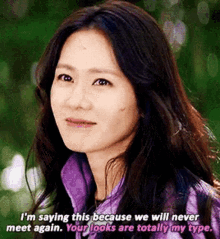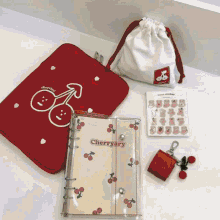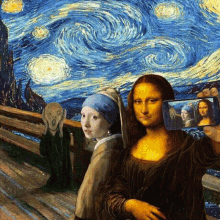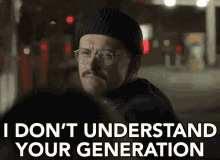The world of fashion is ever-evolving, driven by a myriad of influences, from the catwalks of Paris to the streets of Tokyo. However, in recent years, a new player has emerged in this dynamic arena, one that is digital, virtual, and brimming with creativity: video games. This captivating fusion of gaming and fashion has given rise to a unique and ever-expanding subculture that's turning heads, both on and off the screen.
In this digital age, where pixels and polygons have become the threads of a new creative tapestry, it is worth exploring the question: Are video games the new source of fashion trends?
From the iconic fashion choices of video game characters to the bustling world of cosplay conventions, the influence of video games on style is undeniable. Gaming is not just about playing; it is about self-expression, and what we wear in these virtual realms often reflects our real-world fashion choices. The relationship between gaming and fashion goes beyond mere aesthetics; it dives into the realms of identity, community, and even commerce.
History of the Connection Between Gaming and Fashion
The intertwining of gaming and fashion may seem like a contemporary phenomenon, but it has its roots in the early days of video gaming. The story of this connection is a fascinating journey that has shaped the way we view and consume fashion today.
The bond between gaming and fashion dates back to the early arcade and console gaming era of the late 20th century. The pixelated sprites of characters like Mario, Sonic, and Pac-Man began making their mark not only as beloved game figures but also as inadvertent fashion icons.
These characters had distinctive and easily recognizable outfits that soon found their way into the wardrobes of young gamers. The simplicity of these designs, from Mario's red cap and overalls to Sonic's iconic red shoes, made them instantly recognizable and easily adaptable into everyday wear.
As video games evolved, so did the ways in which players could express themselves through fashion. Role-playing games (RPGs) allowed players to customize their avatars with various clothing and accessories. Gamers could be wizards, knights, or space explorers, and their fashion choices within the game reflected their chosen roles. This customization aspect not only enhanced gameplay but also laid the groundwork for a more profound connection between gaming and personal style.
Japan has played a pivotal role in bridging the gap between gaming and fashion. Many of the most iconic gaming franchises, such as Final Fantasy, Zelda, Resident Evil, and Pokémon, hail from Japan. With their uniquely styled characters, these games have had a substantial impact on the global fashion scene.
Japanese street fashion trends, often seen as avant-garde and unconventional, have been heavily influenced by the eccentric characters and designs found in video games. The blending of vibrant colors, eccentric accessories, and futuristic elements in both gaming and fashion has created a cross-pollination of creative ideas.
In the '80s and '90s, arcades were hubs of social activity for gamers. It was here that a distinct gaming culture emerged, complete with its own fashion trends. Gamers sported vibrant, graphic-heavy T-shirts featuring their favorite arcade games or characters.
These shirts became a symbol of pride and camaraderie among the gaming community. The fusion of gaming and fashion in this era was organic, with players proudly showcasing their gaming passion through their clothing choices.
The proliferation of gaming magazines in the late 20th century, such as Nintendo Power and GamePro, provided enthusiasts with not only gaming news but also insights into the world of gaming merchandise. These magazines often featured fashion spreads showcasing the latest gaming-related apparel and accessories.
From Super Mario-themed backpacks to Sonic the Hedgehog sneakers, gaming merchandise started becoming a fashion statement. The concept of "merch" transcended the realms of gaming, appealing to a broader audience who appreciated the nostalgia and unique designs.
Cosplay, short for "costume play," was a game-changer in the gaming and fashion connection. Originating in Japan, cosplay involves fans dressing up as their favorite video game (or other pop culture) characters. This phenomenon quickly spread globally and became a subculture in its own right.
Cosplayers invest considerable time and effort into crafting detailed and accurate costumes. The artistic and creative elements of cosplay have significantly influenced the fashion world, particularly in the realm of craftsmanship and attention to detail. Cosplayers have elevated dressing up as characters from video games into an art form and a legitimate avenue for fashion exploration.
Iconic Video Game Characters and Their Impact on Fashion
Iconic video game characters have seamlessly transitioned from the pixelated screens of gaming consoles to the runways of the fashion world, leaving an indelible mark on popular culture. Their distinctive styles and outfits have transcended the gaming realm, influencing fashion trends that resonate with both dedicated fans and designers alike. Among these legendary characters are the protagonists of the "Resident Evil" series, who have played a significant role in the convergence of gaming and fashion.
Lara Croft, the fearless adventurer from the "Tomb Raider" series, has been a prominent figure in both the gaming and fashion worlds since her debut in 1996. Her signature look, characterized by a turquoise tank top, cargo shorts, and dual pistols holstered on her hips, quickly became a symbol of empowerment.
Beyond her in-game escapades, Lara's outfit has been embraced by countless individuals as a representation of strength and resilience. Her impact extends far beyond the confines of the gaming world, contributing to the resurgence of utility clothing, harnesses, and combat boots in both streetwear and high fashion.
The "Resident Evil" series, known for its gripping survival horror gameplay, has also made significant contributions to the world of fashion. Characters like Jill Valentine and Leon S. Kennedy are renowned for their distinctive appearances.
Jill's iconic blue tube top and mini-skirt, along with Leon's police uniform and leather jacket, have garnered attention not only from gamers but also from fashion enthusiasts seeking to replicate their style. The influence of "Resident Evil" can be seen in the popularity of tactical gear and leather fashion items, echoing the survivalist and apocalyptic themes of the games. This reflects highly in the popularity of Resident Evil Jackets.
The impact of these iconic video game characters is not confined to the virtual worlds they inhabit. Their influence extends to fashion choices in the real world, transcending the boundaries of gaming and inspiring entire subcultures. They have sparked a fashion revolution, allowing gamers and fashion enthusiasts to express their personalities, creativity, and admiration for the characters through their clothing choices.
In the ever-evolving relationship between gaming and fashion, these iconic figures have left an enduring legacy. They continue to shape how individuals express themselves and experiment with style.
The fusion of gaming and fashion is not merely a fleeting trend; it is a cultural phenomenon that draws inspiration from the digital realm and reimagines it in the physical world. As gaming characters continue to evolve and capture the imagination of new generations, their impact on fashion is sure to endure, ensuring that the connection between these two creative realms remains vibrant and ever-changing.
Cosplay as a Fashion Subculture
Cosplay, short for "costume play," has become a dynamic and influential subculture at the intersection of gaming, fashion, and self-expression. It allows individuals to don the personas of their favorite video game characters, bringing these digital avatars to life in a tangible and often spectacular way. This phenomenon has extended well beyond the boundaries of convention floors, infiltrating mainstream fashion and capturing the hearts of enthusiasts worldwide.
Cosplay is not merely about wearing costumes; it is an art form that demands dedication, creativity, and craftsmanship. Cosplayers invest significant time and effort into crafting detailed and authentic costumes, meticulously replicating the clothing, accessories, and even makeup of their chosen characters.
As a result, cosplay has fostered a sense of community and camaraderie among those who share a passion for both gaming and fashion. It is a space where individuals can not only express their love for video games but also showcase their creative talent and craftsmanship.
The impact of cosplay on fashion is twofold. On one hand, it has contributed to the rising popularity of DIY and handmade clothing and accessories, inspiring a new generation of crafters and designers. The attention to detail and dedication to accuracy displayed by cosplayers has set new standards for craftsmanship in fashion, leading to a greater appreciation for tailor-made and unique pieces. Cosplayers have elevated dressing up as video game characters to an art form and a legitimate avenue for fashion exploration.
On the other hand, the influence of cosplay extends beyond convention floors. The imaginative and creative elements of cosplay have seeped into mainstream fashion, with designers and brands drawing inspiration from the subculture. Runways have witnessed the incorporation of cosplay-inspired elements, from intricate armor-like accessories to fantastical makeup. Cosplay has influenced high fashion by blurring the lines between reality and fantasy, resulting in captivating and out-of-the-box collections.
Cosplay has become more than just a hobby; it is a testament to the power of self-expression and creativity. As it continues to grow, it shapes the way we approach and appreciate fashion, placing an emphasis on craftsmanship, individuality, and imagination. This subculture bridges the gap between gaming and fashion, allowing enthusiasts to embody the characters they adore and redefine the boundaries of self-expression through clothing. It's a world where reality and fantasy converge, and the impact it has on both gaming and fashion is undeniable.
Collaborations Between Gaming Companies and Fashion Brands
In recent years, the synergy between gaming companies and fashion brands has emerged as a potent force in shaping fashion trends. These collaborations have not only blurred the lines between the two worlds but have also resulted in unique and sought-after fashion collections that resonate with gamers and fashion enthusiasts alike.
Gaming companies have recognized the immense potential of their intellectual properties in the fashion industry. Through collaborations with established fashion brands, they have tapped into a global market eager to showcase their gaming passion through clothing and accessories. These partnerships have led to the creation of limited-edition, collectible fashion items that draw inspiration from beloved video game franchises, such as "Fortnite," "The Legend of Zelda," and "League of Legends."
These collaborations often feature designs that pay homage to iconic characters, in-game items, or memorable settings, making them instantly recognizable to fans. The fusion of gaming aesthetics with high-end fashion craftsmanship has resulted in apparel and accessories that transcend the boundaries of fandom, appealing to a broader audience who appreciates the artistic and cultural significance of these pieces.
Gaming and fashion collaborations have become a testament to the evolution of style and the influence of gaming in the fashion world. They offer a unique platform for gamers to showcase their passion and demonstrate that gaming is not just a hobby but a lifestyle. As these collaborations continue to thrive, they not only create a bridge between gaming and fashion but also open up exciting avenues for creative expression that transcend the traditional constraints of both industries.
Gamers as Style Influencers
In the digital age, gamers have ascended to become style influencers, transcending the confines of their gaming screens and redefining the way fashion trends are conceived, promoted, and adopted. With the rise of livestreaming platforms and gaming content creation on platforms like Twitch and YouTube, gamers have inadvertently become style icons, showcasing their unique personalities through fashion choices and impacting the industry in remarkable ways.
Gamers, particularly those who have gained significant followings through their gaming-related content, have become influential figures in the realm of style. Their on-screen personas often reflect their personal fashion preferences, and as viewers tune in to watch them play, they are exposed to these influencers' distinctive styles.
Gamers like Ninja, Pokimane, and xQc have amassed legions of followers not only for their gaming prowess but also for their individual fashion statements, which include everything from streetwear and sneaker collections to high-end luxury brands.
This phenomenon has catalyzed a cultural shift, highlighting the duality of gamers who are as comfortable discussing the latest fashion drops as they are discussing gaming strategy. The fusion of gaming and fashion has led to a new generation of tastemakers, reshaping the fashion landscape and making it more inclusive and diverse. It challenges the stereotypes that once separated the world of gaming from high fashion, showcasing that being a gamer can coexist seamlessly with being a fashion-forward individual.
The impact of gamers as style influencers is evident not only in the way they promote and shape fashion trends but also in how they inspire their followers to experiment with their own fashion choices. As the gaming industry continues to grow and diversify, so too will the influence of gamers on the fashion world, creating a dynamic interplay between these two realms that promises to be ever-evolving and exciting.
Final Note
The intersection of gaming and fashion has evolved into a dynamic and influential partnership, transcending the boundaries of their respective domains. From iconic video game characters becoming symbols of empowerment and style to the vibrant cosplay subculture that showcases the dedication of enthusiasts, the impact of gaming on fashion is unmistakable.
Collaborations between gaming companies and fashion brands have opened up a world of collectible, wearable art, blurring the lines between fandom and high-end style. Moreover, gamers themselves have emerged as style influencers, redefining how we perceive gaming culture and fashion.
This fusion of gaming and fashion is not a mere trend but a cultural shift, where self-expression, creativity, and imagination take center stage. It encourages individuality and a breaking of traditional fashion constraints, making it an ever-evolving and exciting journey for both gamers and fashion enthusiasts. As the gaming industry continues to grow and diversify, the realm of gaming fashion promises to be a dynamic and influential force in the years to come.

















